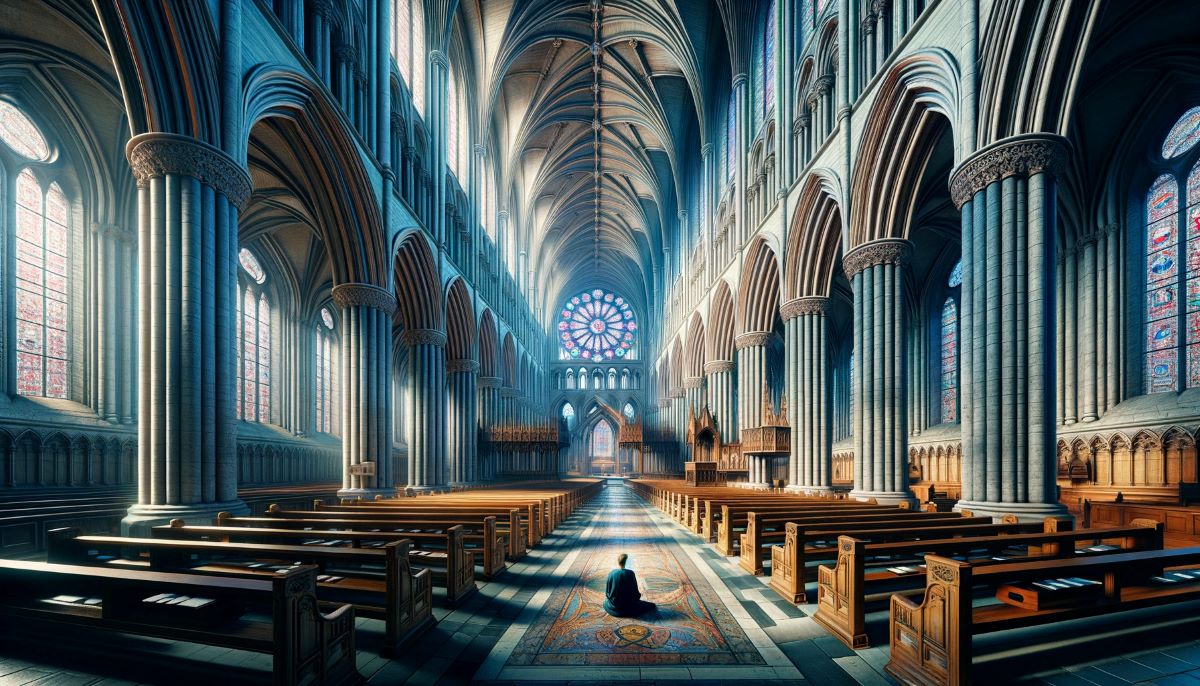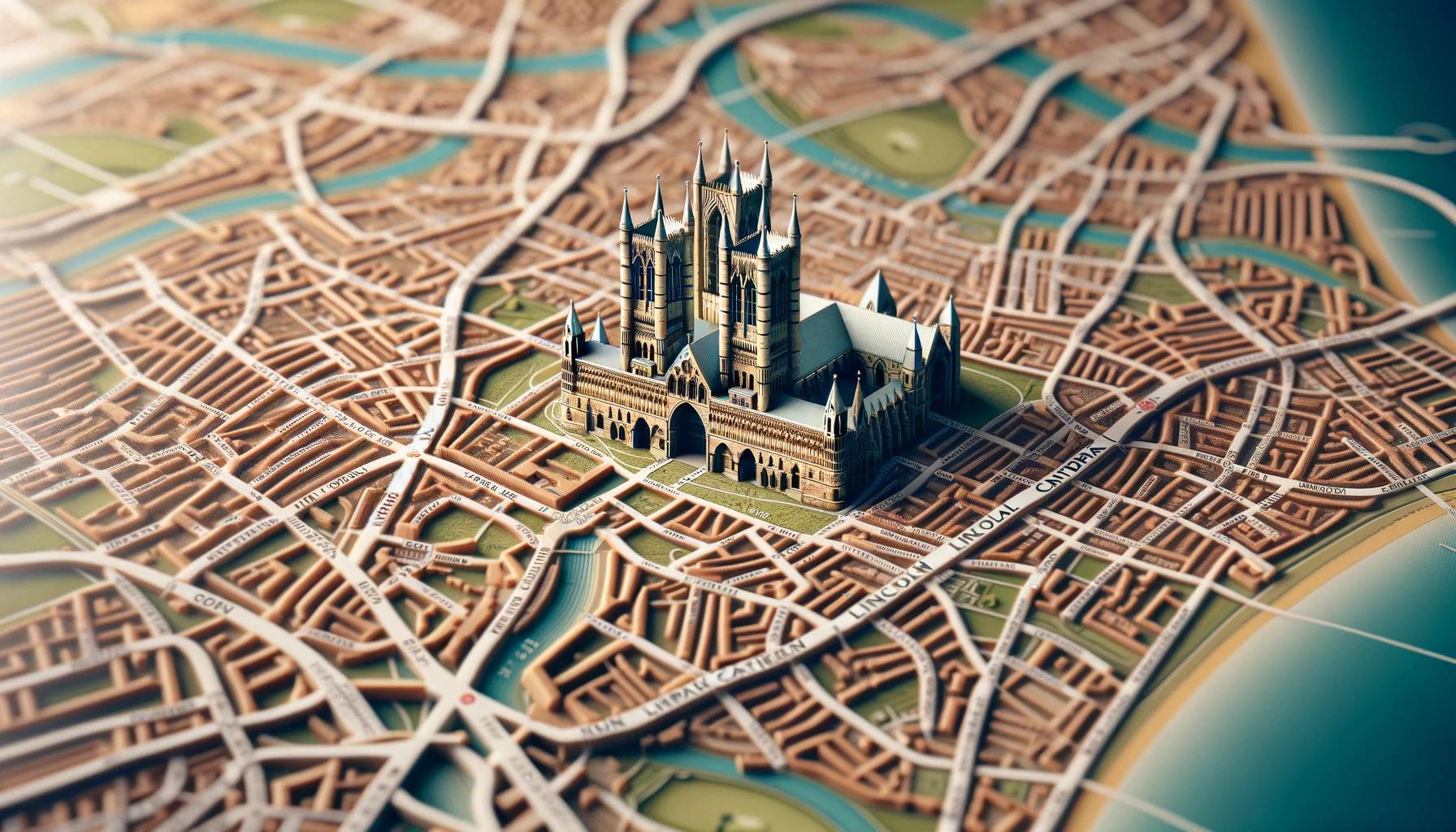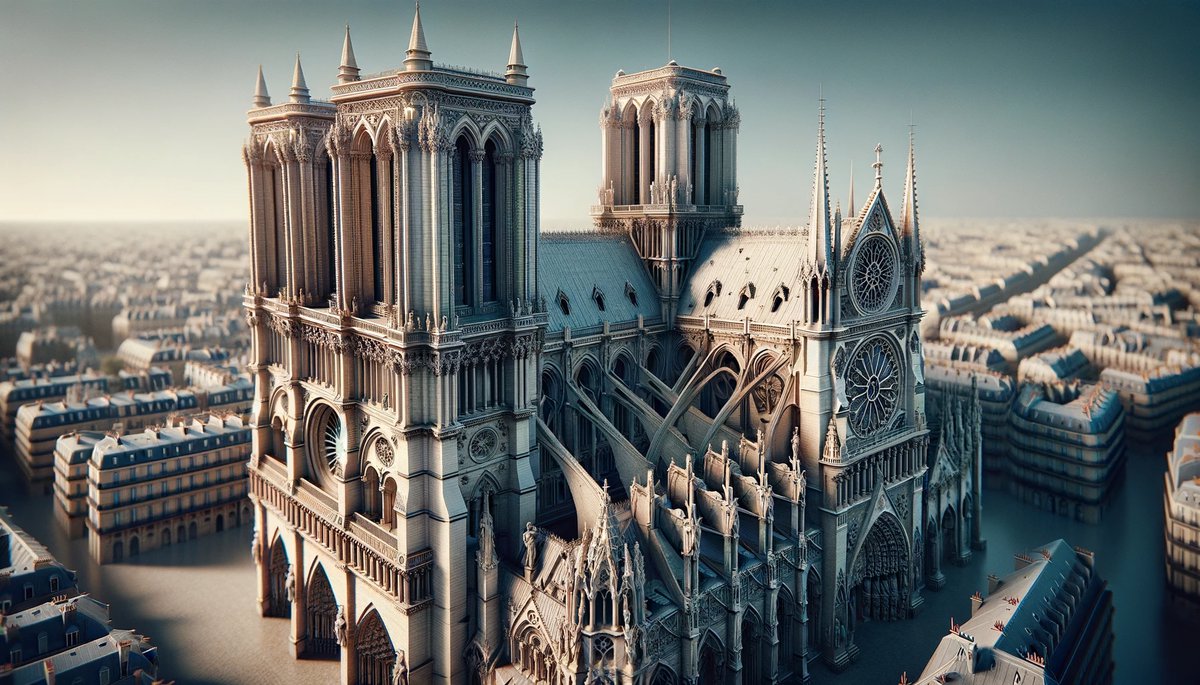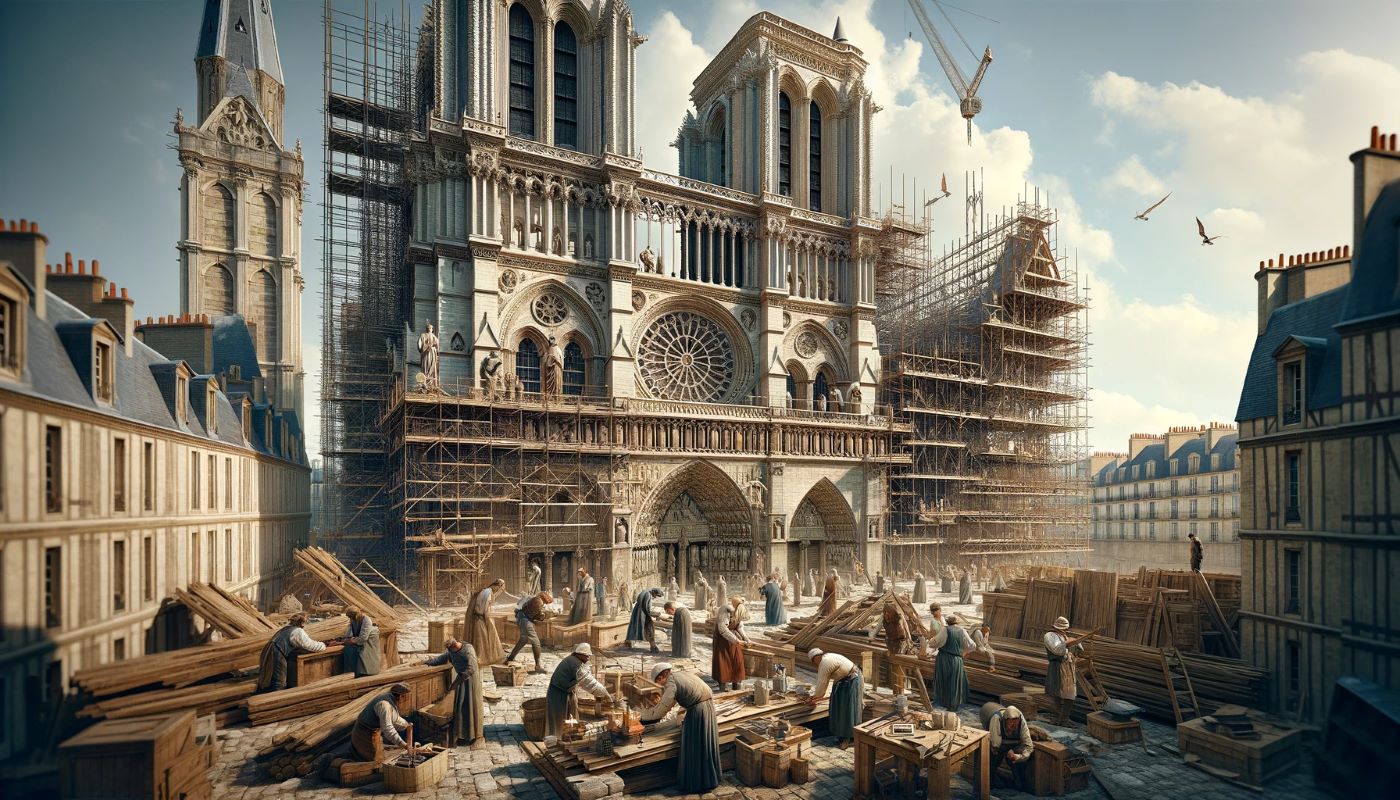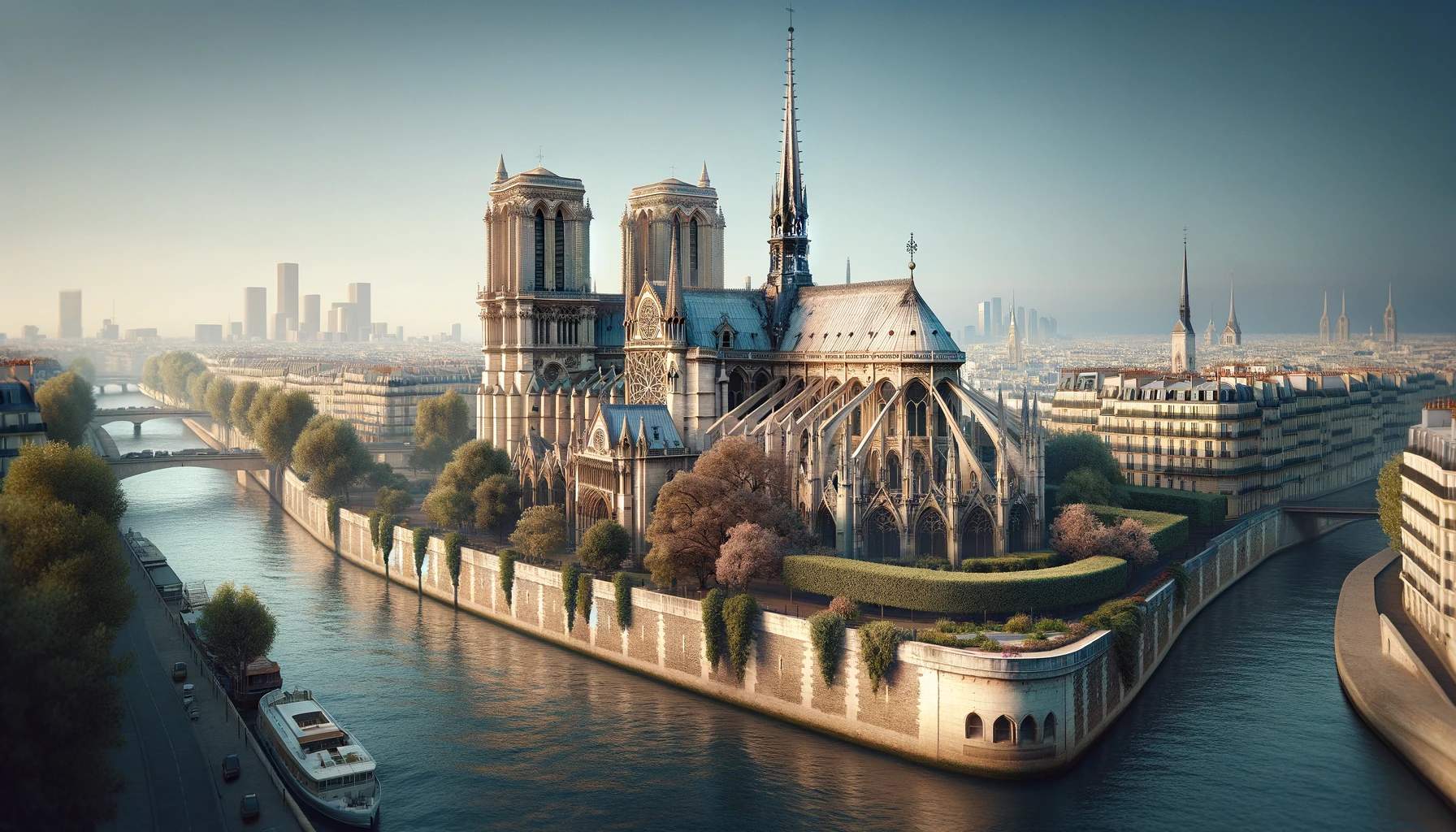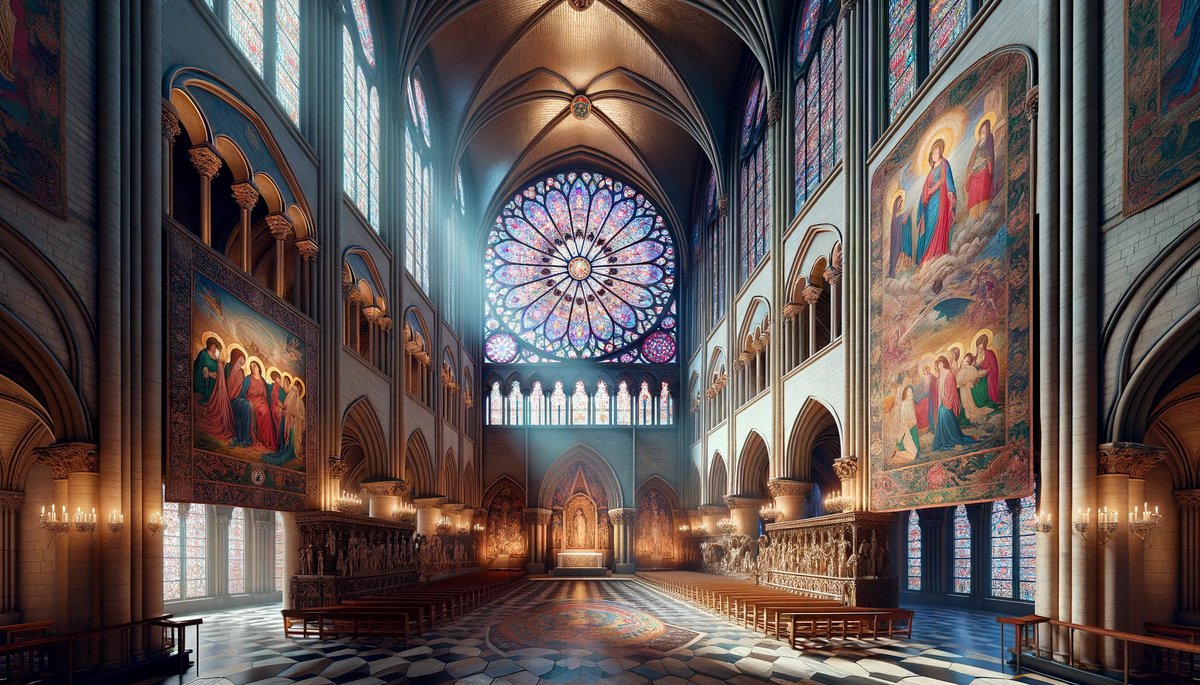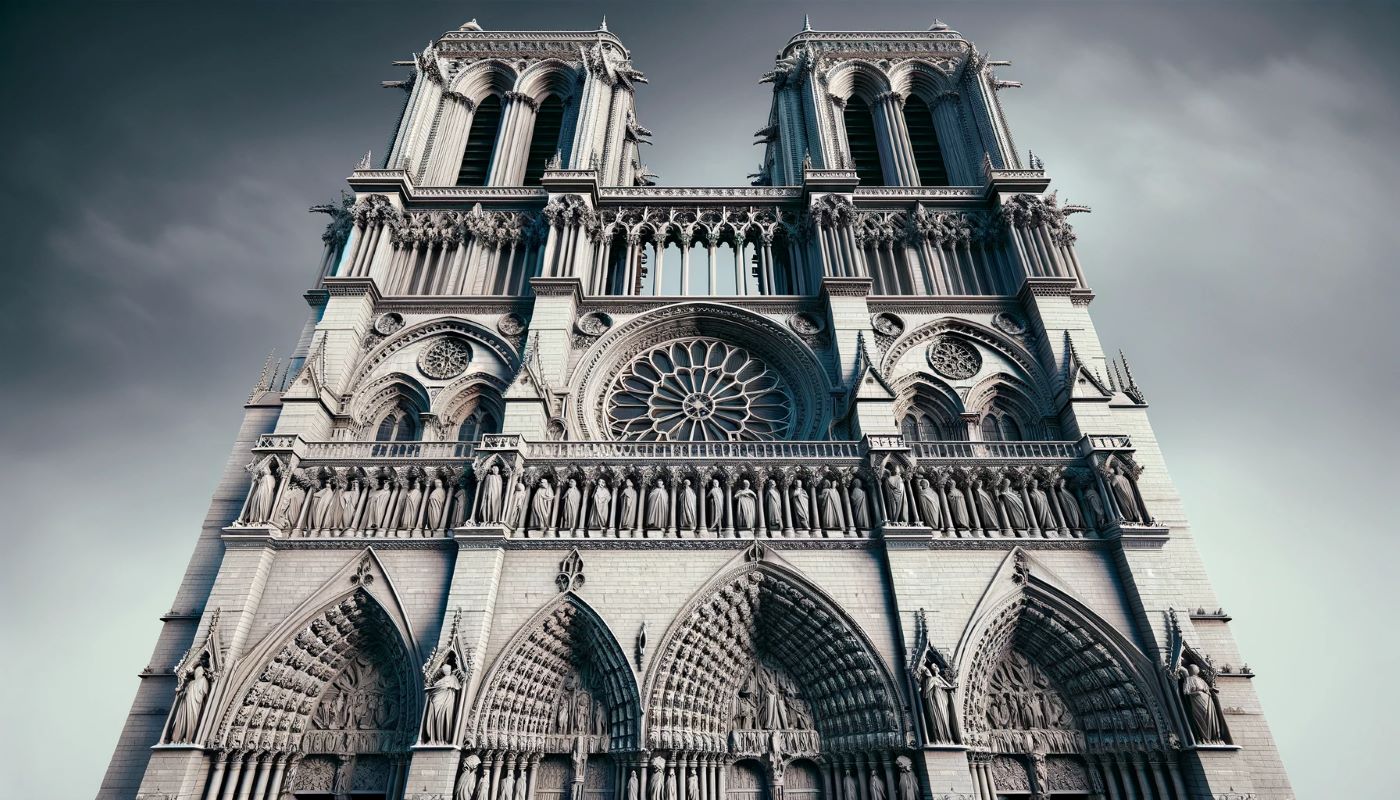Home>Arts and Culture>Where Is The Notre Dame Cathedral Located


Arts and Culture
Where Is The Notre Dame Cathedral Located
Published: February 18, 2024
Ericka Andersen, an editor at Christian.net, expertly merges digital strategy with content creation, focusing on faith and societal issues. Her communication skills enhance the platform's engaging narratives, fostering meaningful dialogue on belief's impact on society.
Discover the iconic Notre Dame Cathedral, located in the heart of Paris. Immerse yourself in the rich arts and culture of this historic landmark.
(Many of the links in this article redirect to a specific reviewed product. Your purchase of these products through affiliate links helps to generate commission for Christian.net, at no extra cost. Learn more)
Table of Contents
Introduction
The Notre Dame Cathedral stands as a timeless symbol of human achievement and spiritual devotion. Its awe-inspiring architecture and rich history have captivated the hearts and minds of people from around the world. This iconic structure, with its intricate design and profound cultural significance, continues to serve as a testament to the ingenuity and creativity of humanity.
The Notre Dame Cathedral, often referred to simply as Notre Dame, is a masterpiece of Gothic architecture that has withstood the test of time. Its construction began in 1163 and was completed in 1345, showcasing the dedication and craftsmanship of countless artisans and builders. The cathedral's imposing facade, adorned with striking sculptures and intricate rose windows, exudes a sense of grandeur and spiritual reverence.
Beyond its architectural splendor, Notre Dame Cathedral holds a special place in history, having witnessed significant events and served as a symbol of resilience. From the coronation of Napoleon Bonaparte to the inspiration it provided to literary giants like Victor Hugo, the cathedral has left an indelible mark on the cultural landscape of France and the world at large.
As a testament to human creativity and devotion, Notre Dame Cathedral has become a cherished landmark, drawing millions of visitors each year. Its soaring spires and majestic interior, adorned with stunning stained glass windows and ornate decorations, offer a profound sense of wonder and tranquility to all who enter its hallowed halls.
The Notre Dame Cathedral stands as a testament to the enduring power of human creativity and spiritual aspiration. Its timeless beauty and historical significance continue to inspire awe and reverence, making it a must-see destination for travelers and a source of pride for the people of Paris.
Read more: Where Is The Notre-Dame Cathedral
History of the Notre Dame Cathedral
The history of the Notre Dame Cathedral is a captivating tale that spans over eight centuries, marked by triumphs, challenges, and enduring resilience. Construction of this architectural marvel commenced in 1163 during the reign of King Louis VII and was completed in 1345, a testament to the unwavering dedication of generations of craftsmen and artisans. The cathedral's foundation was laid on the site of an ancient Roman temple, underscoring the continuity of human endeavor and spiritual reverence across the ages.
Throughout its storied past, the Notre Dame Cathedral has borne witness to pivotal moments in French history. Its consecration in 1182 marked the beginning of its role as a center of religious and cultural significance. The cathedral's soaring spires and intricate stonework stand as a testament to the ingenuity and craftsmanship of medieval artisans, who imbued the structure with a sense of divine grandeur.
In the centuries that followed, Notre Dame Cathedral became a focal point for royal ceremonies and national events. It was here that Napoleon Bonaparte was crowned Emperor of the French in 1804, solidifying the cathedral's place in the annals of French history. However, the 19th century also brought challenges, as the cathedral fell into disrepair before being rescued from potential demolition by a passionate wave of public sentiment, bolstered by the publication of Victor Hugo's novel, "The Hunchback of Notre-Dame."
The 20th century brought further trials for the Notre Dame Cathedral, as it endured the ravages of two World Wars. Despite sustaining damage during these tumultuous times, the cathedral emerged as a symbol of hope and resilience, embodying the enduring spirit of the French people. The 21st century, however, brought a devastating fire in 2019, which engulfed the cathedral's iconic spire and roof. This tragic event sparked a global outpouring of support and solidarity, underscoring the cathedral's profound impact on people around the world.
Today, the Notre Dame Cathedral stands as a testament to the resilience of human creativity and the enduring power of faith. Its rich history, marked by triumphs and tribulations, serves as a poignant reminder of the indomitable spirit of the human endeavor. As the cathedral continues its restoration and renewal, it remains a beacon of hope and inspiration, inviting visitors to witness the enduring legacy of this architectural masterpiece.
Architectural Features
The Notre Dame Cathedral is renowned for its breathtaking architectural features, which reflect the pinnacle of Gothic design and craftsmanship. The cathedral's facade is adorned with striking sculptures and ornate decorations, showcasing the intricate artistry of medieval craftsmen. Its imposing twin towers, reaching skyward with majestic grandeur, stand as a testament to the ingenuity and vision of the architects who brought this awe-inspiring structure to life.
One of the most iconic elements of the Notre Dame Cathedral is its stunning rose windows, which adorn the facade and transepts. These magnificent stained glass windows, dating back to the 13th century, depict intricate biblical scenes and colorful designs, casting a mesmerizing kaleidoscope of light into the cathedral's interior. The interplay of light and color creates an ethereal ambiance, evoking a sense of transcendence and spiritual wonder for visitors.
The interior of the cathedral is equally captivating, with its soaring vaulted ceilings and graceful flying buttresses. The nave, with its impressive length and height, draws the eye upward, inviting contemplation and reverence. The intricate stone carvings that adorn the interior, depicting scenes from religious lore and medieval life, serve as a testament to the skill and dedication of the artisans who brought these visions to life.
The spire of the Notre Dame Cathedral, though tragically lost in the 2019 fire, was a defining feature of the Parisian skyline. Its intricate design and soaring height symbolized the aspirations of humanity reaching toward the heavens. Efforts are underway to restore this iconic spire, ensuring that future generations will continue to be inspired by its majestic presence.
The architectural features of the Notre Dame Cathedral stand as a testament to the enduring legacy of Gothic design and the timeless beauty of human creativity. Each element, from the intricate sculptures to the soaring spires, embodies the dedication and vision of the artisans who crafted this masterpiece. As the cathedral undergoes restoration and renewal, its architectural splendor continues to inspire awe and reverence, inviting visitors to marvel at the enduring legacy of this cultural treasure.
Importance of the Notre Dame Cathedral
The Notre Dame Cathedral holds profound significance as a cultural, historical, and architectural treasure, transcending its role as a religious edifice. Its enduring importance resonates on multiple levels, shaping the identity of Paris and serving as a symbol of human creativity, resilience, and spiritual devotion.
From an architectural standpoint, the Notre Dame Cathedral stands as a pinnacle of Gothic design, showcasing the ingenuity and craftsmanship of medieval artisans. Its soaring spires, intricate rose windows, and graceful flying buttresses represent the apex of architectural achievement during the Middle Ages. The cathedral's structural innovations, including its ribbed vaults and pointed arches, revolutionized architectural design and continue to inspire awe and admiration among architects and enthusiasts worldwide.
Beyond its architectural significance, Notre Dame Cathedral holds a central place in the cultural tapestry of France. It has served as a backdrop for pivotal historical events, from royal coronations to national celebrations, shaping the collective memory of the French people. The cathedral's enduring presence in art, literature, and popular culture further underscores its cultural importance, with Victor Hugo's novel "The Hunchback of Notre-Dame" cementing its status as a beloved symbol of Parisian heritage.
Moreover, the Notre Dame Cathedral stands as a testament to the resilience of the human spirit. Throughout its storied history, the cathedral has weathered wars, revolutions, and natural disasters, emerging as a symbol of hope and endurance. The outpouring of global support following the 2019 fire exemplifies the cathedral's profound impact, transcending national boundaries and uniting people in a shared commitment to its restoration and preservation.
Spiritually, Notre Dame Cathedral has provided solace and inspiration to countless individuals, regardless of their religious affiliations. Its sacred spaces, adorned with exquisite religious art and symbolism, offer a sanctuary for contemplation and introspection. The cathedral's role as a place of pilgrimage and worship underscores its enduring spiritual importance, fostering a sense of connection and transcendence for visitors from diverse backgrounds.
In essence, the Notre Dame Cathedral's importance extends far beyond its physical presence in the heart of Paris. It embodies the collective aspirations, achievements, and resilience of humanity, serving as a timeless testament to the enduring power of art, faith, and cultural heritage. As the cathedral continues its restoration and renewal, its importance as a beacon of inspiration and unity remains unwavering, inviting future generations to cherish and celebrate its enduring legacy.
Current Location and Address
The Notre Dame Cathedral is situated on the eastern half of the Île de la Cité in the 4th arrondissement of Paris, France. Its precise address is 6 Parvis Notre-Dame – Pl. Jean-Paul II, 75004 Paris, offering a central and easily accessible location for visitors from around the world. The cathedral's strategic placement on the Île de la Cité, one of the two natural islands on the Seine River within the city limits of Paris, underscores its historical and cultural significance.
Surrounded by the flowing waters of the Seine, Notre Dame Cathedral commands a commanding presence, drawing the gaze of admirers and pilgrims alike. Its location within the heart of Paris positions it as a focal point for both locals and tourists, inviting exploration and contemplation amidst the bustling energy of the city.
The cathedral's address, 6 Parvis Notre-Dame – Pl. Jean-Paul II, serves as a gateway to a rich tapestry of historical and architectural wonders. Visitors approaching from the nearby Île Saint-Louis or the adjacent neighborhoods are greeted by the iconic facade of Notre Dame, with its twin towers and ornate sculptures, creating a sense of anticipation and reverence.
The central location of Notre Dame Cathedral facilitates seamless access for visitors, with numerous transportation options available. Whether arriving by foot, public transit, or boat along the Seine, individuals are greeted by the awe-inspiring presence of this architectural marvel. The cathedral's accessibility ensures that it remains a cornerstone of Parisian heritage, welcoming individuals from all walks of life to experience its timeless beauty and historical significance.
As a cultural and historical landmark, the Notre Dame Cathedral's current location and address serve as a testament to its enduring relevance and appeal. Positioned at the nexus of Parisian history and contemporary vibrancy, it continues to inspire and captivate visitors, inviting them to partake in the rich tapestry of human achievement and spiritual devotion that defines this iconic edifice.
Read more: Notre Dame Cathedral: Who Is Buried There
How to Get to the Notre Dame Cathedral
Getting to the Notre Dame Cathedral is a straightforward and enriching experience, offering visitors a variety of transportation options to reach this iconic landmark. Whether arriving from within Paris or traveling from other parts of the world, accessing the cathedral is convenient and rewarding.
By Metro
The Paris Metro system provides a convenient and efficient means of reaching the Notre Dame Cathedral. The closest metro station to the cathedral is the aptly named "Cité" station, located on Île de la Cité. From there, visitors can easily walk to the cathedral, immersing themselves in the historic surroundings as they approach this architectural masterpiece.
By RER
For those arriving from the outskirts of Paris or neighboring regions, the RER (Réseau Express Régional) offers a swift and direct route to the Notre Dame Cathedral. The Saint-Michel-Notre-Dame station, situated in close proximity to the cathedral, provides seamless access for travelers utilizing the RER network.
By Bus
Paris boasts an extensive bus network, allowing visitors to access the Notre Dame Cathedral from various points within the city. Several bus lines serve the vicinity of the cathedral, providing a scenic and leisurely journey through the streets of Paris before arriving at this historic site.
Read more: Who Insured Notre Dame Cathedral
By Boat
The Seine River, which gracefully winds its way through the heart of Paris, offers a unique and picturesque approach to the Notre Dame Cathedral. Numerous boat tours and river cruises provide an enchanting voyage along the Seine, with the cathedral's striking silhouette serving as a captivating focal point during the journey.
By Foot
For those exploring Paris on foot, the Notre Dame Cathedral is easily accessible from various points within the city center. Its central location on the Île de la Cité makes it a natural destination for leisurely strolls, allowing visitors to savor the ambiance of Parisian streets and landmarks as they make their way to this cultural gem.
Accessibility
The Notre Dame Cathedral is committed to ensuring accessibility for all visitors. The cathedral's management provides information on accessible entrances, facilities, and services, ensuring that individuals with diverse mobility needs can experience the cathedral's splendor and historical significance.
Navigating the vibrant streets of Paris to reach the Notre Dame Cathedral is an integral part of the experience, offering a glimpse into the city's rich tapestry of history and culture. Whether arriving by metro, RER, bus, boat, or on foot, the journey to this iconic landmark is imbued with a sense of anticipation and wonder, setting the stage for a memorable encounter with one of the world's most revered architectural marvels.
Conclusion
In conclusion, the Notre Dame Cathedral stands as a timeless testament to the enduring legacy of human creativity, resilience, and spiritual devotion. Its rich history, spanning over eight centuries, reflects the triumphs and tribulations of the French nation and the indomitable spirit of the human endeavor. From its awe-inspiring architectural features to its central place in the cultural tapestry of Paris, the cathedral continues to captivate the hearts and minds of people from around the world.
The Notre Dame Cathedral's significance extends far beyond its role as a religious edifice. It embodies the pinnacle of Gothic design, showcasing the ingenuity and craftsmanship of medieval artisans. Its soaring spires, intricate rose windows, and graceful flying buttresses represent the apex of architectural achievement, inspiring awe and admiration among visitors and enthusiasts alike.
Moreover, the cathedral holds a central place in the cultural identity of France, serving as a backdrop for pivotal historical events and a source of inspiration for artists, writers, and filmmakers. Its enduring presence in popular culture, exemplified by Victor Hugo's iconic novel, "The Hunchback of Notre-Dame," underscores its cultural importance and enduring appeal.
The Notre Dame Cathedral's resilience in the face of adversity, from wars and revolutions to the devastating fire of 2019, exemplifies the enduring spirit of the human endeavor. The global outpouring of support following the fire reaffirmed the cathedral's profound impact, transcending national boundaries and uniting people in a shared commitment to its restoration and preservation.
Spiritually, the cathedral continues to provide solace and inspiration to visitors from diverse backgrounds, offering a sanctuary for contemplation and introspection. Its sacred spaces, adorned with exquisite religious art and symbolism, foster a sense of connection and transcendence, inviting individuals to partake in the cathedral's timeless legacy.
As the Notre Dame Cathedral undergoes restoration and renewal, its importance as a beacon of inspiration and unity remains unwavering. It continues to invite future generations to cherish and celebrate its enduring legacy, ensuring that its timeless beauty and historical significance will endure for centuries to come.
